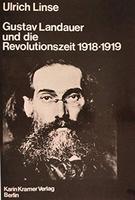Subject

photo credits: Wikimedia Commons
The German Revolution of 1918–1919 or November Revolution (German: Novemberrevolution) took place in Germany at the end of the First World War. It began with the downfall of the German Empire and eventually resulted in the establishment of the Weimar Republic. The revolutionary period lasted from November 1918 until the adoption of the Weimar Constitution in August 1919. Among the factors leading to the revolution were the extreme burdens suffered by the German population during the four years of war, the economic and psychological impacts of the German Empire's defeat by the Allies, and growing social tensions between the general population and the aristocratic and bourgeois elite. The first acts of the revolution were triggered by the policies of the Supreme Command (Oberste Heeresleitung) of the German Army and its lack of coordination with the Naval Command (Seekriegsleitung). In the face of defeat, the Naval Command insisted on trying to precipitate a climactic pitched battle with the British Royal Navy utilizing its naval order of 24 October 1918, but the battle never took place. Instead of obeying their orders to begin preparations to fight the British, German sailors led a revolt in the naval ports of Wilhelmshaven on 29 October 1918, followed by the Kiel mutiny in the first days of November. These disturbances spread the spirit of civil unrest across Germany and ultimately led to the proclamation of a republic to replace the imperial monarchy on 9 November 1918, two days before Armistice Day. Shortly thereafter, Emperor Wilhelm II fled the country and abdicated his throne. The revolutionaries, inspired by communist and socialist ideas, did not hand over power to Soviet-style councils as the Bolsheviks had done in Russia, because the leadership of the Social Democratic Party of Germany (SPD) opposed their creation. The SPD opted instead for a national assembly that would form the basis for a parliamentary system of government. Fearing an all-out civil war in Germany between militant workers and reactionary conservatives, the SPD did not plan to strip the old German upper classes completely of their power and privileges. Instead, it sought to peacefully integrate them into the new social democratic system. In this endeavour, SPD leftists sought an alliance with the German Supreme Command. This allowed the army and the Freikorps (nationalist militias) to act with enough autonomy to quell the communist Spartacist uprising of 5–12 January 1919 by force. The same alliance of political forces succeeded in suppressing leftist uprisings in other parts of Germany, with the result that the country was completely pacified by late 1919. The first elections for the new Constituent German National Assembly (popularly known as the Weimar National Assembly) were held on 19 January 1919, and the revolution effectively ended on 11 August 1919, when the Constitution of the German Reich (Weimar Constitution) was adopted. Source: Wikipedia (en)
Works about German Revolution of 1918–1919 20
Selbstermächtigung, Emanzipation und Repression
Die Revolution 1918/19 in Westfalen und Lippe als Forschungsproblem
Der Anfang, der ein Ende war
Die deutsche Revolution 1918/1919
The Lost Revolution: Germany 1918 to 1923
Die Revolution von 1918/19 in Oldenburg
Gustav Landauer und die Revolutionszeit 1918–1919: Die politischen Reden, Schriften, Erlasse und Briefe Landauers aus der November-Revolution 1918–1919
Failure of a Revolution: Germany 1918-1919
November 1918: A German Revolution
Der Bürgerkrieg in Deutschland
Vom Kaiserreich zur Republik
Die Novemberrevolution
Vom Kaiserreich zur Republik
Schuld und Sühne: Gesammelte Flugschriften von 1919
Schutzhaft
1918
Alle Macht den Räten! 1
Literatur im Klassenkampf
Soldatenräte und Revolution
Alle Macht den Räten!
Works about German Revolution of 1918–1919 1
Subject - wd:Q170306

















